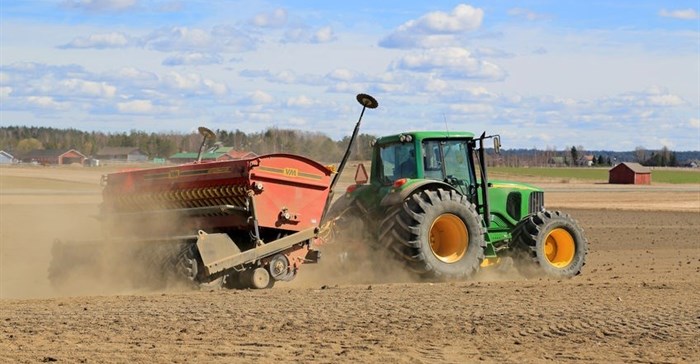
So what's the big fuss about no-till agriculture?
MARRAKESH, MOROCCO: Soil needs nurturing. Like any living organism it requires just the right combination of nutrients and organic matter in order to be healthy. A tenet of conventional agriculture has been to till the fields in preparation for planting, but this is changing.

©Taina Sohlman via 123RF - John Deere 6620 Agricultural Tractor and VM Direct Seed Drill.
Settat is a cereal-producing region about 2.5 hours outside Marrakesh in Morocco. Here small-scale farmers are particularly vulnerable to the impact of climate variability and reduced rainfall. Between 1970 and 2012 rainfall in the region decreased from 435mm to 306mm and has become more unpredictable. Here agriculture is rainfed and irrigation is not a cost-effective option, according to Oussama El Gharras of the national agri-research body - Institut National de Recherche Agronomique (INRA).
This means that small-scale farmers needed a new plan of action.
Green Morocco Strategy
Enter the Moroccan government with its "Plan Maroc Vert" or Green Morocco Strategy which aims to make agriculture a driving force for equitable economic growth. This plan was launched in 2008 and envisages creating 1.5 million jobs by 2020. A large part of this strategy is to assist small-scale farmers who make up the bulk of the agri-sector to modernise their practices and boost the quantity and quality of their yields. The goal is also to move them from a subsistence livelihood to a market-linked enterprise.
The government partnered with the Global Environment Facility which is a global partnership of 18 agencies that include NGOs, the UN, and development banks that use "strategic investments" to "help reduce poverty, strengthen governance and achieve greater equality between women and men." GEF contributed a $4.3 million grant that galvanised additional funding from the World Bank and a $.2.4 billion from the Moroccan government.
So how does this help the small-scale farmers? Climate change adaption technologies were piloted in 10 sites among 2,500 small farmers. In Settat, INRA facilitated the testing of direct seeding. This means that instead of tilling the soil in preparation for planting as tradition dictates, a mechanised seeder is used to simultaneously add the seed and fertiliser to the soil.
Till vs no-till
"The area was largely a pastoral region," says INRA's El Gharras. But with colonialism and the Second World War, European nations relied largely on North Africa for its food needs and much of the country's pastoral land was converted to crop production on a large scale. Tilling not only dries out the soil and makes life difficult for the micro-organisms keeping soil healthy but it also results in the loss of top soil during rainy periods. This results in land degradation.
No-till agriculture by means of direct seeding allows the soil to remain intact and to better absorb moisture and nutrients. This is not organic farming as herbicides are used to kill off weeds but it is envisioned that the improved soils, over time, will need less and less additives.
Etiaqi Hammou leads a local farmers organisation. He says that the expected yields with this new method were around 60-70 percent more than using conventional methods but they were pleasantly surprised with yields of more than 120 percent. "Thanks to this project we have learned that soil is not just dirt but an asset," he says.
Source: allAfrica

AllAfrica is a voice of, by and about Africa - aggregating, producing and distributing 2000 news and information items daily from over 130 African news organisations and our own reporters to an African and global public. We operate from Cape Town, Dakar, Lagos, Monrovia, Nairobi and Washington DC.
Go to: http://allafrica.com/Related
Transformation in agricultural technology demands agile insurance response 28 Jan 2025 Kenya’s farmers have lots of digital tools to help boost productivity – how they can be made more effective 21 Jan 2025 South Africa must push agricultural exports within Brics 23 Oct 2024 Technology and sustainable farming can contain the cost-price squeeze 9 Oct 2024 The role of AI in the agricultural revolution and risks of change 19 Aug 2024 Malawi farming experiment shows how simple changes can boost maize yields and improve soil 13 Jun 2024






